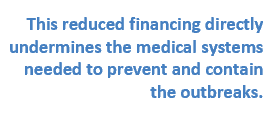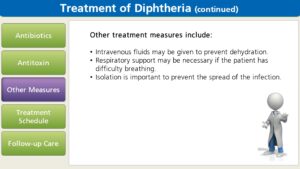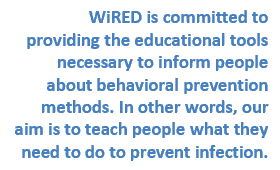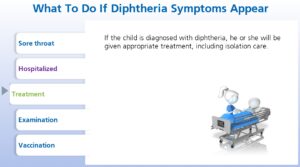By Gary Selnow; Edited by Elizabeth Fine
Background to the Diphtheria Outbreak
As we approach the end of 2025, the world is experiencing a resurgence of diphtheria, particularly across much of Africa, with active outbreaks reported in Nigeria, Niger, Guinea, Mauritania, Somalia, and South Africa. This highly contagious, vaccine-preventable bacterial disease has largely affected children, with over 2,000 cases and at least 87 child deaths recorded in Somalia alone, marking the largest outbreak there in decades.

This public health crisis in low-resource regions has been compounded by severe cuts in global health funding from major donor countries, notably by the United States. This reduced financing directly undermines the medical systems needed to prevent and contain the outbreaks. The cuts threatened the capacity of international organizations like WHO and Gavi, leading to vaccine shortages and the inability to set up emergency booster campaigns and reinforce fragile health systems. The reversal of decades of progress against vaccine-preventable diseases demonstrates the harsh impact of diminishing global health investments.
WiRED’s Diphtheria Training Module
 WiRED has just released an updated version of its diphtheria training module available to medical communities and community health workers worldwide. This module, along with other modules and animations related to infectious disease management, are designed to provide health teams with critical information to prepare community members for disease outbreaks. Vaccines once provided a significant measure of disease prevention, but now with substantial reductions in vaccine availability, WiRED is committed to providing the educational tools necessary to inform people about behavioral prevention methods. In other words, our aim is to teach people what they need to do to prevent infection.
WiRED has just released an updated version of its diphtheria training module available to medical communities and community health workers worldwide. This module, along with other modules and animations related to infectious disease management, are designed to provide health teams with critical information to prepare community members for disease outbreaks. Vaccines once provided a significant measure of disease prevention, but now with substantial reductions in vaccine availability, WiRED is committed to providing the educational tools necessary to inform people about behavioral prevention methods. In other words, our aim is to teach people what they need to do to prevent infection.
 This diphtheria module describes diphtheria, discusses diagnosis and treatment, and it teaches how people can protect themselves. For instance, they should cover coughs and sneezes because the bacteria travel through air droplets. Since the bacteria also spread through direct physical contact, people should avoid touching secretions of infected people and objects they handle. People should maintain good personal hygiene and avoid crowds. The module also cautions people who travel, noting that they will be at increased risk if they venture into infected areas.
This diphtheria module describes diphtheria, discusses diagnosis and treatment, and it teaches how people can protect themselves. For instance, they should cover coughs and sneezes because the bacteria travel through air droplets. Since the bacteria also spread through direct physical contact, people should avoid touching secretions of infected people and objects they handle. People should maintain good personal hygiene and avoid crowds. The module also cautions people who travel, noting that they will be at increased risk if they venture into infected areas.
Finally . . .
 WiRED’s diphtheria module, as with our hundreds of other health training modules, are offered to anyone and especially to CHWs for whom they were specially developed. Anyone can download HealthMAP, WiRED’s app for phones and tablets that allows access to all our modules for free. WiRED also has opened its CHW training program to communities everywhere, all without cost. Our objective is to help people living in low-resource environments learn about health to protect themselves against illness. This has become especially important in the face of severe budget cuts to global health.
WiRED’s diphtheria module, as with our hundreds of other health training modules, are offered to anyone and especially to CHWs for whom they were specially developed. Anyone can download HealthMAP, WiRED’s app for phones and tablets that allows access to all our modules for free. WiRED also has opened its CHW training program to communities everywhere, all without cost. Our objective is to help people living in low-resource environments learn about health to protect themselves against illness. This has become especially important in the face of severe budget cuts to global health.
Important information about diphtheria
 Diphtheria is a highly contagious infectious disease caused by the Corynebacterium diphtheriae bacteria. The infection targets the upper respiratory tract (nose and throat), although a milder form can affect the skin. Transmission is person to person, mainly through airborne droplets from an infected person’s cough or sneeze. Diphtheria also spreads by way of bodily secretions. It’s less common, but touching contaminated objects can also transmit the bacteria.
Diphtheria is a highly contagious infectious disease caused by the Corynebacterium diphtheriae bacteria. The infection targets the upper respiratory tract (nose and throat), although a milder form can affect the skin. Transmission is person to person, mainly through airborne droplets from an infected person’s cough or sneeze. Diphtheria also spreads by way of bodily secretions. It’s less common, but touching contaminated objects can also transmit the bacteria.
Common early symptoms, appear two to five days after infection. They include a low-grade fever, sore throat, and swollen neck glands. A hallmark symptom is the formation of a pseudomembrane– a thick, grayish-white coating in the throat and nose—that differentiates diphtheria from other sore throat infections. It can severely obstruct the airway to make breathing and swallowing difficult.
Another troubling feature of diphtheria is that a toxin developed by the bacteria can enter the bloodstream, causing potentially fatal damage to other organs. These include myocarditis (inflammation of the heart muscle) that can lead to heart failure, and neurological complications such as paralysis of the limbs or the diaphragm, which helps us breathe.

A swab from the affected area is necessary for diagnosis. Immediate treatment is essential. It involves administering the diphtheria antitoxin to neutralize the poison, combined with antibiotics to kill the bacteria and stop toxin production.
Vaccination is the best form of prevention, and those who are unvaccinated or under-vaccinated—especially children younger than five and adults older than 60 are at highest risk. Untreated cases have a mortality rate as high as 40% to 50%. In the absence of vaccines, behavioral prevention to avoid contracting the bacteria, is the next best way to avoid diphtheria.



